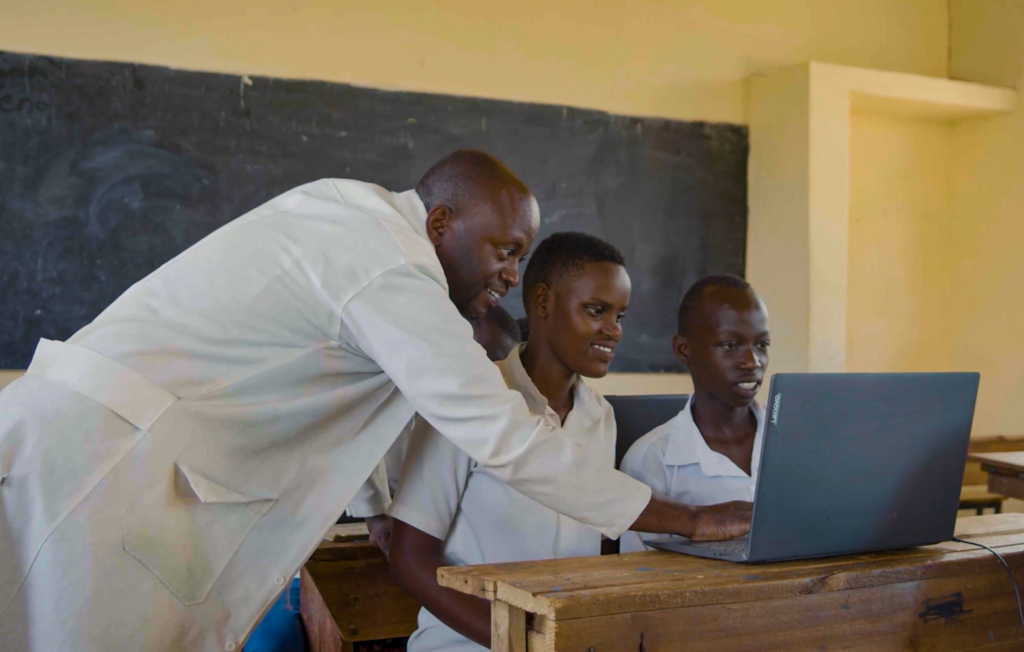The International Day of Education marks the second anniversary of the three-year partnership between IHS Towers and Giga, the United Nations Children’s Fund (UNICEF) and the International Telecommunication Union (ITU) initiative to connect every school in the world to the Internet and bridge the digital divide in education by 2030.
Let’s take a moment on this International Day of Education to reflect on the crucial role connectivity plays in shaping the learning landscape for children. In a world where digital technologies are rapidly evolving, connecting schools to the internet helps children develop digital skills and access online learning content, enhancing their educational experience.
As an owner, operator and developer of communications infrastructure in Africa, Latin America and the Middle East, IHS Towers has shared its tower location and other data with Giga in six countries as part of its commitment to school connectivity in underserved areas. This data is part and parcel of the Giga toolkit. Once partners like IHS Towers have provided Giga with tower location data, Giga’s experts calculated whether a school is visible from one of these towers using publicly available elevation maps.
IHS also made an important contribution to Giga’s activities in Rwanda. Using IHS Towers’ data, Giga determined that in Rwanda the average distance from a school to the closest visible tower is 2.5 kilometers (1.5 miles), with 98% of schools visible from at least one tower and 95% from two towers. Thanks to Giga’s visibility analysis, Rwanda has been able to identify relevant technologies and connectivity solutions, such as Fixed Wireless Access FWA and IMT technologies (4G, 5G, etc.) to extend coverage and Point to Point P2P connectivity to certain school locations.
IHS Towers’ Rwanda data plays a part in another key feature of the Giga platform: an innovative, open source cost-modelling tool to help governments and stakeholders connect schools in the most cost-effective way possible. Thanks to the complete datasets for Rwanda from IHS Towers and other sources, Rwanda provided a critical validation of the Giga cost model. The model came out of development at the close of 2023, and will be further strengthened through use of case studies in countries across Africa and Latin America. It will also be adding a component to calculate sustainable connectivity by using the school’s online access as a community hub and revenue source from surrounding institutions and businesses.
“Rwanda is a lovely case study that speaks very highly of the Giga work and the good work that can occur when the private sector works alongside the public,” said Carolina Desmeules, Vice President of Communications and Sustainability, IHS Towers.
Among Giga’s 14 corporate and non-profit partners, IHS Towers stands out as the sole private communications infrastructure company providing tower data for Giga’s products. In addition to crucial data, the company has made a significant contribution of $4.5 million to support the initiative.
“IHS Towers emphasizes the importance of corporations working to support government efforts in connecting schools by identifying geographical gaps in connectivity,” said Desmeules. “We’re entering the third year of a three-year partnership (with Giga) and we’ve really enjoyed seeing the impact of our partnership.”
With the support of corporate partners like IHS Towers, Giga’s technical support and open-source connectivity solutions have helped governments connect nearly 6,000 schools and 2.4 million students to the internet, narrowing the digital divide that denies 1.3 billion children access to online learning and economic opportunity in an increasingly digital world.
The success of Giga’s collaboration with IHS Towers is inspiring other companies to take part in Giga’s mission to expand digital inclusion for the world’s young people. With so much yet to accomplish, effective partnerships, both public and private, are essential to connect every school in the world to the internet, and every young person to information, opportunity and choice.

